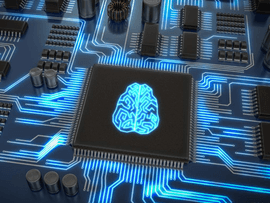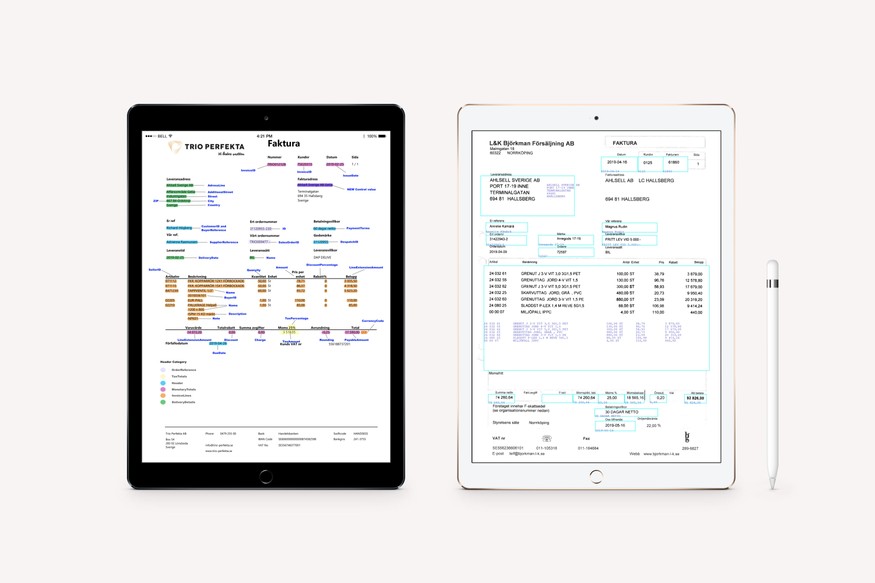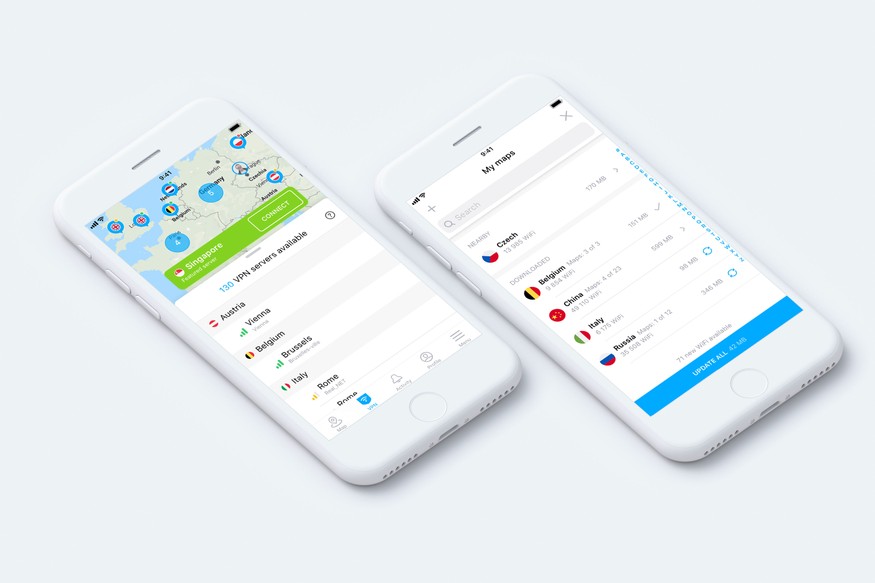Top 6 Applications of Deep Learning in Business
When you ask Alexa to play your favorite song or open Netflix to browse suggestions, deep learning algorithms are doing their job. Different applications of deep learning entered our everyday lives so seamlessly that we hardly even noticed that.
But the potential of deep learning goes far beyond these cases. This technology keeps pushing the envelope across many industries, helping analyze volumes of data in no time and bringing automated processes to a new level of autonomy. Imagine self-driving cars dominating the roads, or universally recognizable health records solving the interoperability problem, or apps translating languages in real-time while you’re talking to foreigners —deep learning can bring all of this to life.
This article will outline top deep learning business applications and the benefits they bring to the table. But first, let’s find out what exactly deep learning is and how it works.
What is deep learning?
Simply put, deep learning is an advanced subset of machine learning that solves complex problems by gathering large amounts of data and learning to spot patterns in them. Both deep learning and machine learning come under the umbrella of artificial intelligence. However, deep learning takes machine learning one step further by requiring less manual data processing and learning from data more autonomously. Its neural networks try to imitate how the human brain works and incorporate the ability to learn by example.
In general, deep learning is based on an iterative method that breaks the training process into several hierarchical levels. Let’s see how it works in image recognition, one of the most popular deep learning examples:
- First, deep learning algorithms extract all possible features from images
- Then the system analyzes the features separately from each other (in various sizes, colors, positioning, etc.)
- Finally, deep learning algorithms get to identify them in the context of the whole image
There’s no limit to how intelligent the algorithms can get. The more neural networks are trained and the more data they are fed, the more complex tasks they can perform. As more and more information is collected, deep learning produces more accurate results. All of this means that investment in deep learning promises improved precision and efficiency.
Compared to human capacities, this technology is not only much faster but also more consistent and reliable. The level of accuracy provided by deep learning makes it applicable to practically any industry. It’s especially helpful when it comes to processing lots of unstructured data that would take years for humans to process manually.
Let’s now explore some of the most popular deep learning use cases.
Applications of deep learning across industries
Early deep learning use cases date back to the 1940s but only now do we have enough capabilities—fast computers and massive volumes of data—to train large neural networks to solve real-world problems.
Today, the number of deep learning solutions is rising, and their market is estimated to reach $18.6 billion by 2023. Various AI-powered systems are gaining momentum, and deep learning is part of that technology showing one of the highest annual growth rates.
Let’s see what deep learning is used for and what tasks it can cover.
Image and video enhancement
Done with a lot of manual effort, image and video restoration, colorization, and resolution enhancement can be automated with the help of DL algorithms. For example, deep learning can turn low-resolution pictures into high-quality ones and help in video production by automatically syncing audio footage with video frames.
Neural networks can also identify specific items and persons in photos and videos. Thanks to deep learning, we can be automatically tagged on Facebook pictures, sort our photo library by location or type of activity, or apply different filters to photos. That’s why this technology can be beneficial to businesses dealing with a lot of visual materials.
Surveillance cameras and smart home security systems can also enhance their object detection and face recognition capabilities with the help of deep learning. By increasing detection accuracy, these solutions can reduce false alarms and improve overall detection efficiency. This will translate into a better quality of security products and increased customer satisfaction.
Hyper-personalization
Personalization drives huge profits for businesses. Netflix said that its personalized recommendations generate $1 billion a year thanks to the application of deep learning. The company uses the following methods:
- sequence prediction: analyzing user actions to predict their next actions
- contextual sequence prediction: estimating the probability of the next actions
- time-sensitive sequence prediction: experimenting with timestamps to predict the best moment for a recommendation
But it’s not only big tech giants like Netflix that use deep learning to tailor their services to customer preferences. Today, personalized experiences and recommendations are a hype train every business tries to get aboard.
For instance, most e-commerce and entertainment companies can definitely benefit from deep learning. Since customers tend to buy certain types of products again and again, DL can help analyze purchasing patterns and suggest what a customer might be interested in and when. Personalized experiences bring a 20% increase in e-commerce sales on average, and we can expect this number to grow thanks to the predictive power of deep learning.
Besides shopping recommendations based on customer preferences and ads with precise relevancy, there are many other deep learning examples in business, for example, AI-powered chatbots. They handle conversations with users helping companies attract and retain customers.
Language processing
Deep learning improves machine translation and makes it possible to automatically translate text on images or capture and translate speech. The instant visual translation is driven by convolutional neural networks that identify letters, put them into words, and construct phrases out of these words based on a given context.
Applications of NLP (natural language processing) go beyond the purposes directly related to text analysis. For instance, Spotify teaches its systems to crawl large amounts of data on the internet and determine what words are used in the context of particular songs or artists. If a user likes song A and it is being compared with or discussed in relation to song B, then song B is likely to be recommended.
Another powerful example of an NLP application is sentiment analysis, which can be helpful to any business at the stage of market research or when improving customer service. By detecting the tone used by the target audience and sentiments connected to a brand, companies can better understand and engage their customers, as well as improve their brand image and products or services in general.
Document parsing
Another powerful deep learning use case related to NLP is document processing and standardization. Many industries, be it legal, finance, or healthcare, are burdened with enormous volumes of documents based on different templates. AI-powered automation can help process information from various documents in a unified and swift way.
For example, at Quantum, we developed an invoice-handling solution for a Sweden-based client using NLP and computer vision. NLP algorithms recognize a range of values such as dates, names, address lines, order IDs, quantities, etc. Having switched to our system, the client’s employees no longer have to manually retrieve and classify the data from different types of invoices.
As a result, the solution ensures a faster document turnover. The system scans documents in minutes, giving the employees more time for analytical and strategic tasks. On top of that, it reduces the risk of mistakes in documents. Pattern- and keyword-based recognition is up to 82% accurate and eliminates manual errors.
Assistive technologies
This is probably one of the most common areas of the deep learning application. Virtual assistants learn to understand different commands and a particular accent, voice, and tone. The simulation of human speech combines two techniques — unit selection and parametric synthesis. By working with a large collection of recordings, the unit selection provides high-quality speech synthesis. Parametric synthesis, in turn, is responsible for predicting and extracting relevant units.
Apple claims to utilize both techniques to ensure the best possible quality of Siri’s assistance. Their DL algorithms slice the recorded phrases into elementary components and select appropriate segments according to each given situation. The system is trained to understand the request, pull out the most relevant audio segments, and join those segments into a human-like speech with a nuanced tone of voice.
DL-powered voice recognition is geared not just to personal needs. It can also help healthcare apps and hardware devices detect anomalies and symptoms and provide hands-free access to health data when needed urgently. The technology behind health monitoring and assistance keeps evolving and hits new market highs year by year. Today, deep learning is one of the most promising advancements that can improve medical outcomes and make the healthcare industry more patient-friendly.
Fraud detection
Fraud prevention and detection is another promising area for deep learning—big players in the payment system market are already experimenting with it. For instance, PayPal uses a predictive analytics platform to spot and prevent fraudulent activities. The company claimed that studying sequences of user behavior through the long short-term memory architecture of neural networks improved anomaly detection by up to 10%.
The global fraud detection and prevention market is expected to reach $90 billion by 2030.
Sustainable fraud identification practices are a must not only for any fintech company, banking app, or insurance platform but also for any business that collects and uses sensitive data. Deep learning has the potential to make fraudulent activities more predictable and thus preventable. You can also check our success story in fraud detection for mobile applications.
Conclusion
Deep learning represents revolutionary advances and keeps pushing the limits by analyzing more data, learning more from it, and producing more accurate results. We’ve examined some of the popular deep learning examples but the range of DL possible applications is much broader.
If your business needs a solution that will process massive amounts of information and provide you with precise analytics and actionable predictions, deep learning is a great fit. Its algorithms can put your data to the most effective use, monitoring and detecting patterns fast, with high accuracy, and at scale.








